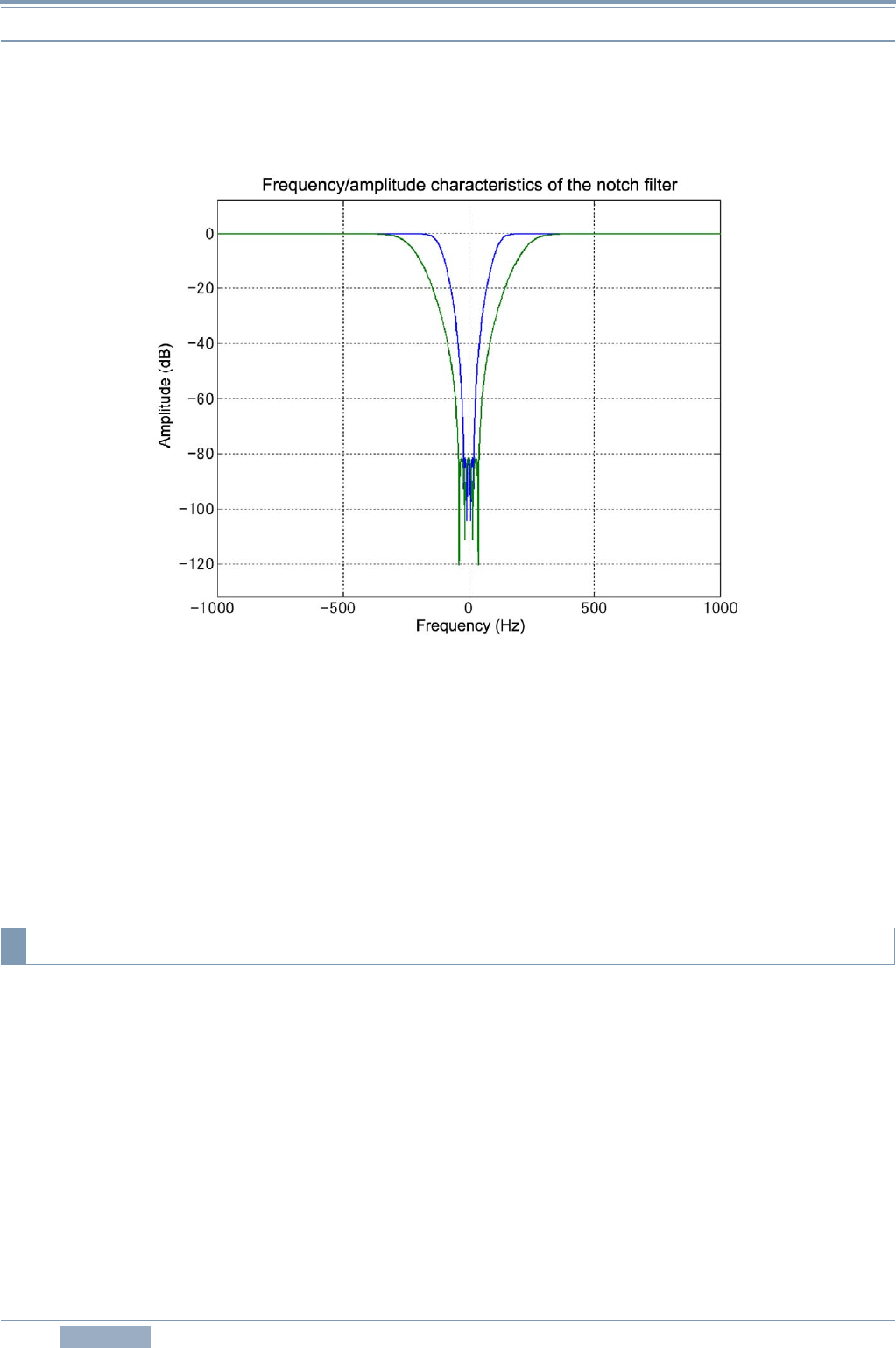
4 DSP
26 CONTENTS TS-590S
There are two settings on the manual notch filter: Normal and Wide. You can choose one of two
bandwidths for the notch filter (Figure 4-8). For a simple beat frequency, Normal is effective. If there
is an interfering SSB signal, or in the event the target signal is also trimmed by LO CUT/ HI CUT, a
Wide setting of the Notch filter used in combination with LO CUT/HI CUT may be effective.
Figure 4-8 Results of Amplitude and Frequency Analysis of the Manual Notch Filter
The shifting of the notch frequency with the notch knob is not actually done by switching the notch
filters depending on the knob position. In fact, within the DSP, the notch filter frequency is fixed and
the frequency shift is made possible by altering the IF signal frequency.
The auto notch filter inherited from the TS-2000S and the TS-870S also has been improved to deliver
better capability to track the beat frequency. The enhanced notch filter has good effect even on a
relatively weak beat signal. The auto notch filter is sharper, like a needle, than the manual notch filter
and can minimize the impact of the notch on the audio.
Refer to 4.6.2 Noise Blanker NB2 (IF Processing).
4.3.4 Digital Noise Blanker (NB2)


















